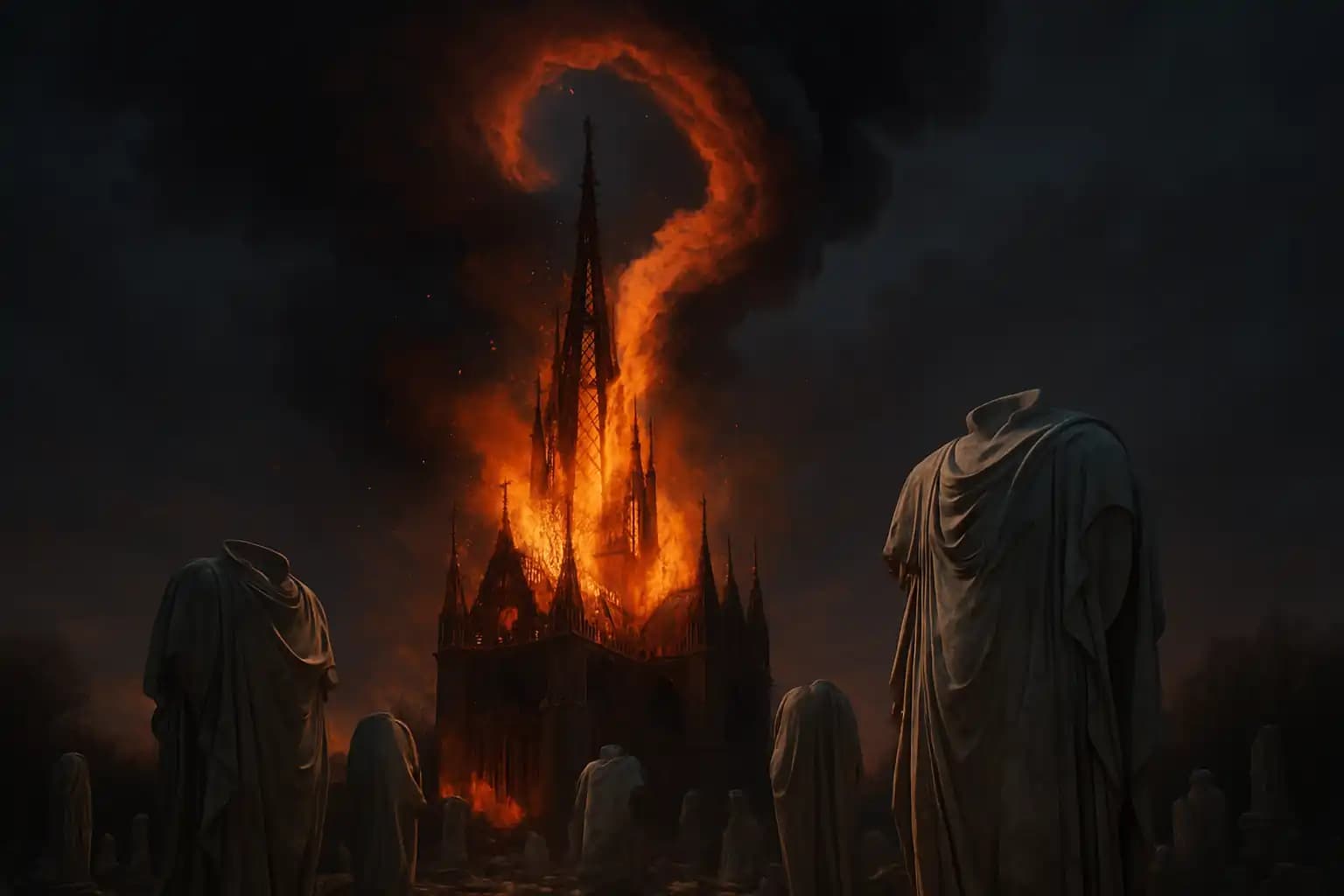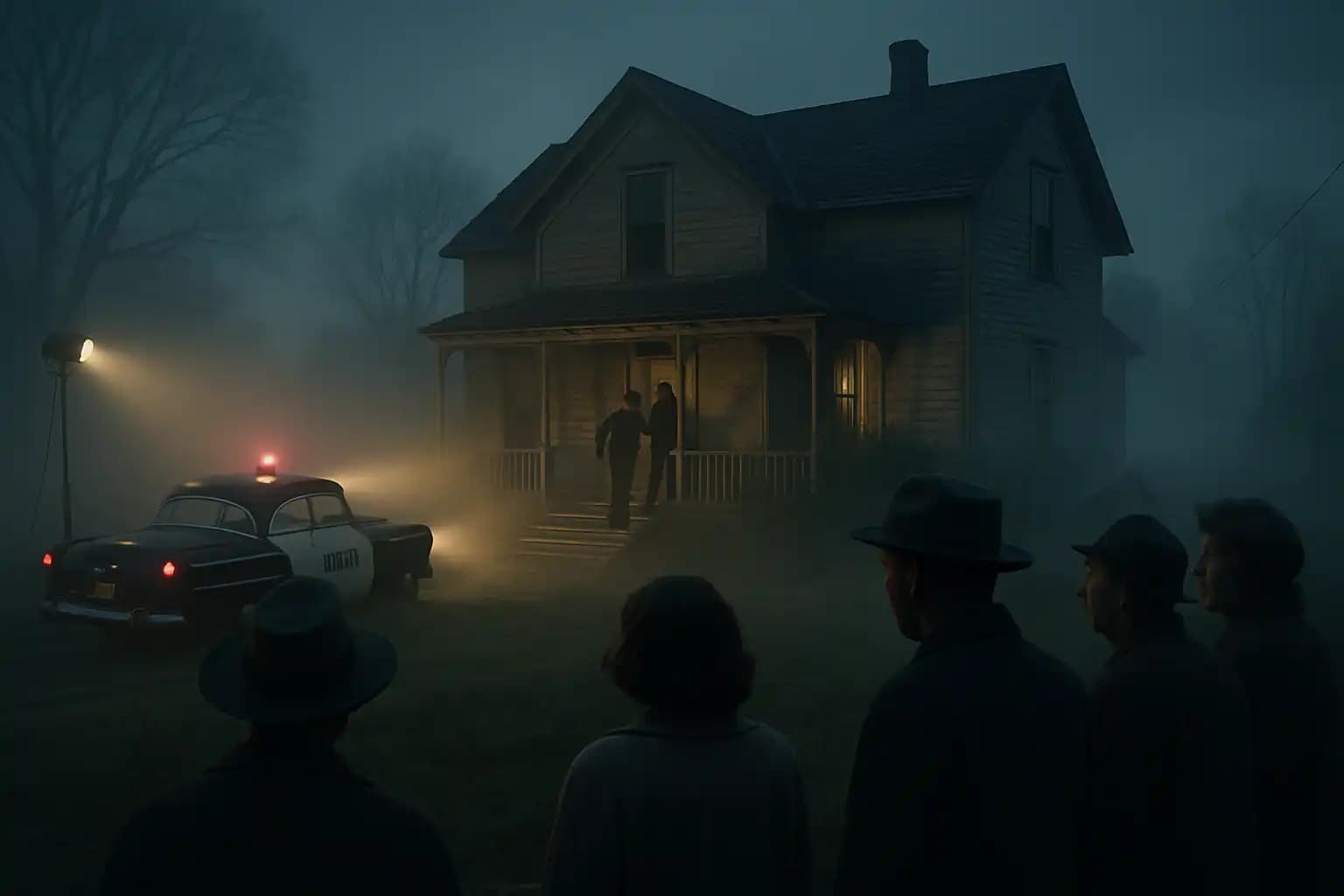Night after night, news shows the same medieval silhouette engulfed by orange flames and the same drone shot of a blackened spire collapsing into embers. Yet, cameras always arrive late—never quite early enough to catch the first spark. When Notre-Dame burned in 2019, viewers gasped, insurers wrote nine-figure checks, and restorers promised a phoenix moment. But questions linger: Why do landmark sites often ignite during renovations, and why do official timelines for rebuilding resemble Marvel-cinematic CGI rather than brick-and-mortar reality?
Welcome to the “Old World Erasure” hypothesis, a growing online movement claiming that somebody—be it the state, a secret society, or algorithmic fate—has spent centuries erasing evidence of a far older, more advanced global culture. Its proof points range from headless marbles of antiquity to Victorian showpieces like Alexandra Palace, which burned down just sixteen days after opening and, according to its archive, rose from the ashes in a mere two years. Combine those anomalies with missing building records, recycled architectural blueprints, and unusually generous insurance payouts, and the pattern becomes harder to dismiss with each new blaze.
Cathedrals on Fire: Repeat Offenders in Stone and Steel
Paris provides Exhibit A. The Notre-Dame fire began near the 19th-century spire—not the wooden roof—during a restoration project that placed welders and scaffolding precisely where the blaze ignited. Official investigations proposed theories ranging from cigarette butts to electrical faults, yet none produced a definitive ignition source. This uncertainty fuels the conspiracy engine: if the spire’s steel skeleton can burn first, skeptics wonder what prevents a torch aimed at the sky by design?
The same narrative repeats across Europe. York Minster suffered three major fires during refurbishments, a detail skeptics cite alongside flashpoint-himalayas-07202024, outlining how crisis repetition can mask deliberate sabotage. Each incident ends with a fundraising blitz, hasty reconstruction, and little transparency about the original craftsmanship now lost forever.
Headless Statues and the Mathematics of Erasure
Move from churches to museums, and the evidence shifts to marble fragments. A viral photo essay showcased dozens of ancient sculptures missing heads, yet preserving delicate fingers and toes. Coincidence, or code? The top Brave result for “statues missing heads” points to a Turkish dig that finally reunited a bust with its body after six years, underscoring how easy it is to misplace the most identifiable part of a monument. Iconoclasm offers one mainstream explanation; historians link wide-scale beheadings to changing religious norms, summarized in iconoclasm’s Wikipedia entry.
However, the Old-World-erased camp points to statistical imbalance: why do limbs survive while necklines fracture with such uncanny consistency? They cite computational models similar to the AI sentiment analysis explored in runaway-minds-ai-07152024 that simulate random breakage patterns. The models predict even damage distribution; yet, museums display selective decapitation. Either ancient vandals aimed strictly for heads, or someone needed to obliterate the feature most capable of revealing identity—and, by extension, technological lineage.
Victorian Miracle Builds and the Logistics Black Hole
Consider Alexandra Palace, London’s so-called “People’s Palace.” Construction began in 1865, wrapped by 1873, and burned within weeks. Contemporary newspapers reported a rebuild by 1875, involving cast-iron girders, acres of glass, and thousands of decorative tiles. Skeptics run the math: supply wagons maxed out at two tons, roads mired in mud half the year, and horsepower was literal. Transporting sixty thousand tons of material up Muswell Hill in under two years would require a freight chain longer than the palace itself. Yet, the official record stands uncontested—until now.
The logistical paradox mirrors arguments in beneath-the-surface-secrets-power-grids-and-looming-extinction-11272023, questioning how modern infrastructure hides in plain sight. If nineteenth-century builders truly moved that mass so quickly, the achievement rivals today’s megaprojects. But if the palace pre-existed—merely re-skinned after the blaze—then the timeline problem evaporates, and the erasure thesis gains a keystone.
Insurance Windfalls and the Economics of Forgetting
Follow the money, say old-school detectives. After Notre-Dame’s flames died, pledges topped €850 million. Alexandra Palace enjoyed state grants and new commercial leases after each calamity. London’s Globe Theatre, Moscow’s Bolshoi, and Chicago’s Union Stock Yards all emerged from fire with better funding than before. These cyclical windfalls echo the disaster-capitalism loop dissected in seconds-before-midnight-07112024—where destruction seeds lucrative reconstruction, while archives and original artistry turn to char.
Critics argue that insurers would never risk intentional arson; actuarial tables would expose patterns. Yet, the conspiracy counterpoints that every payout resets architectural genealogy, replacing stone carved with lost techniques by concrete poured to modern codes. Over centuries, iterative replacements erase fingerprints of whatever civilization raised the first walls.
Digital Sleuths, Data Voids, and the New Iconoclasm
Modern iconoclasts do not swing sledgehammers—they curate data voids. Wikis vanish, scanning projects stall, and 3-D models sit behind paywalls. Cultural-heritage NGOs lament “orphan monuments” whose records burned along with structures. That void amplifies suspicion, much like the censorship loops charted in orwells-echo-06152024. When official blueprints disappear, YouTubers fill the gap with laser scans and LIDAR fly-throughs, only to find their ads demonetized.
Meanwhile, AI large-language models consume centuries of architectural lore. If someone controls the training data—swapping Gothic for “neo-Gothic,” downplaying rebuild timelines—they sculpt future consensus. The result resembles the memory-hole strategy in Orwell’s fiction, but real and algorithmically enforced.
What Survives the Flames: A Path Forward
Architectural historians push back gently. They note that fire loves tall timber roofs and lanternless chimneys, and that missing heads reflect political revolutions, not cosmic cover-ups. Yet, even they concede documentation gaps and timeline oddities. The answer, they say, is redundancy: photogrammetry, cloud-based archives, and citizen-science surveys to crowd-source monument baselines before the next spark. ESA’s heritage-imaging satellites, slated for launch next year, aim to map surface degradation in real time—an insurance against sudden erasure.
Until then, skeptics and scholars share a common imperative: document everything. When the next cathedral scaffolds up for “restoration,” photographers should capture every joint, and drone pilots every column. Whether flames arise from faulty wiring or a clandestine torch, memory stored across multiple nodes is harder to delete.
For ongoing deep dives—architectural or apocalyptic—bookmark Unexplained. Its archives connect cathedral fires to solar flares to shifting geopolitics, weaving the same tapestry conspiracy theorists unravel to question historical canon. Whether the Old World was erased or merely unlucky, its remaining stones deserve better than silence.




